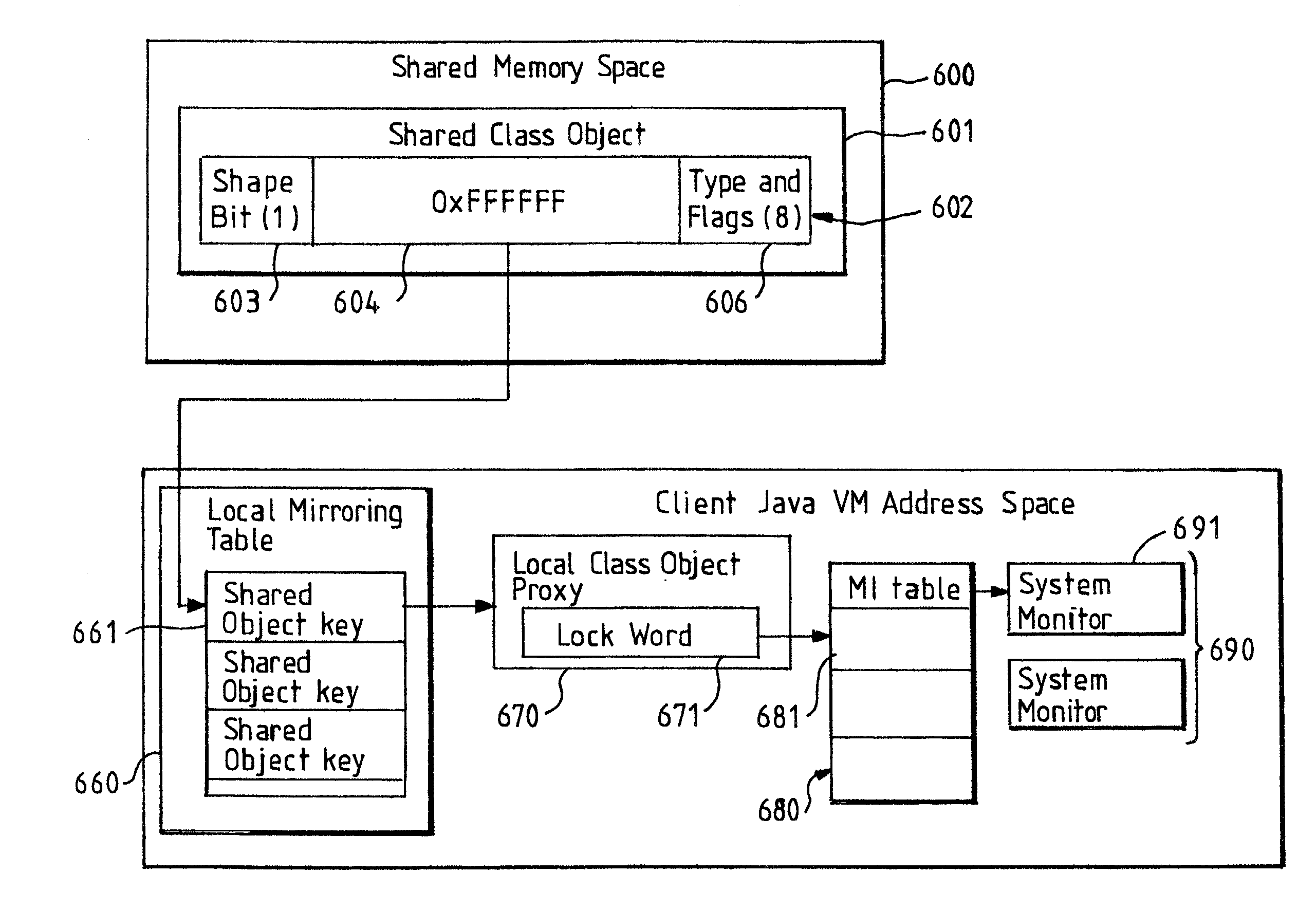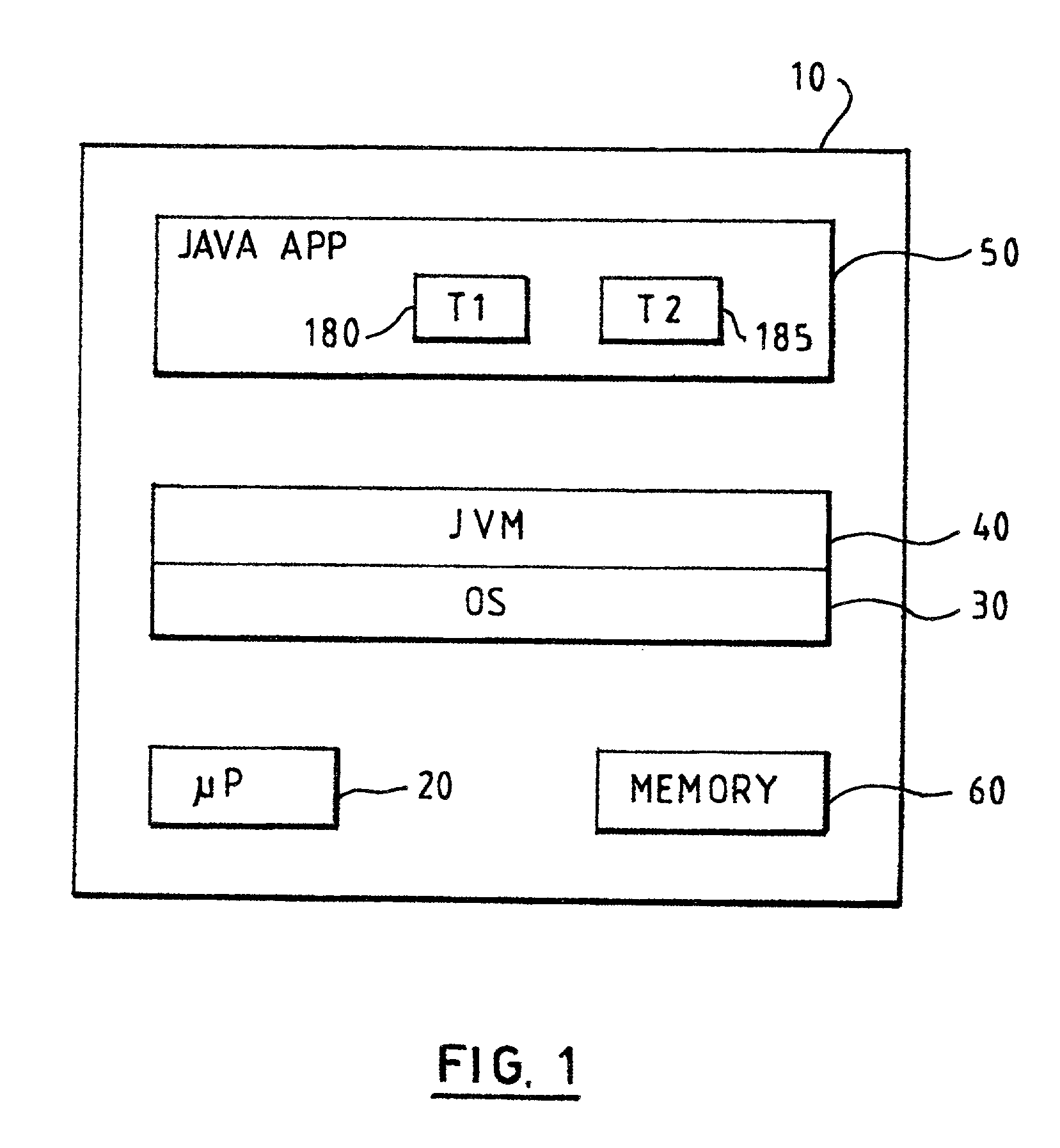Object locking in a shared VM environment
a shared vm environment and object technology, applied in multi-programming arrangements, instruments, data processing applications, etc., can solve problems such as the degraded scalability of java server solutions, the inability to control potentially conflicting access by different vms, and the initial delay in running applications, so as to avoid scalability problems, maintain conformity, and improve the overall system.
- Summary
- Abstract
- Description
- Claims
- Application Information
AI Technical Summary
Benefits of technology
Problems solved by technology
Method used
Image
Examples
Embodiment Construction
[0050]In order to better appreciate the invention, the known structure of a single Java VM will now be described, with reference to FIGS. 1 and 2. Thus FIG. 1 illustrates a computer system 10 including a (micro)processor 20 which is used to run software loaded into memory 60. The software can be loaded into the memory by various means (not shown), for example from a removable storage device such as a floppy disk or CD ROM, or over a network such as a local area network (LAN) or telephone / modem (wired or wireless) connection, typically via a hard disk drive (also not shown). Computer system 10 runs an operating system (OS) 30, on top of which is provided a Java virtual machine (VM) 40. The Java VM 40 looks like an application to the (native) OS 30, but in fact functions itself as a virtual operating system, supporting Java application 50, which potentially includes multiple threads, e.g. T1 180 and T2 185.
[0051]It will be appreciated that computer system 10 can be a standard personal...
PUM
 Login to View More
Login to View More Abstract
Description
Claims
Application Information
 Login to View More
Login to View More - R&D
- Intellectual Property
- Life Sciences
- Materials
- Tech Scout
- Unparalleled Data Quality
- Higher Quality Content
- 60% Fewer Hallucinations
Browse by: Latest US Patents, China's latest patents, Technical Efficacy Thesaurus, Application Domain, Technology Topic, Popular Technical Reports.
© 2025 PatSnap. All rights reserved.Legal|Privacy policy|Modern Slavery Act Transparency Statement|Sitemap|About US| Contact US: help@patsnap.com



